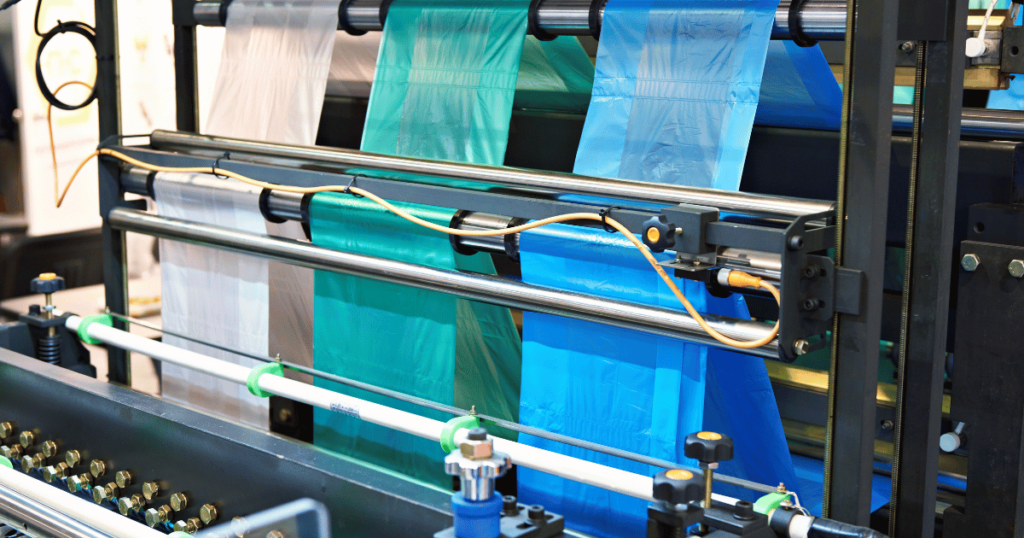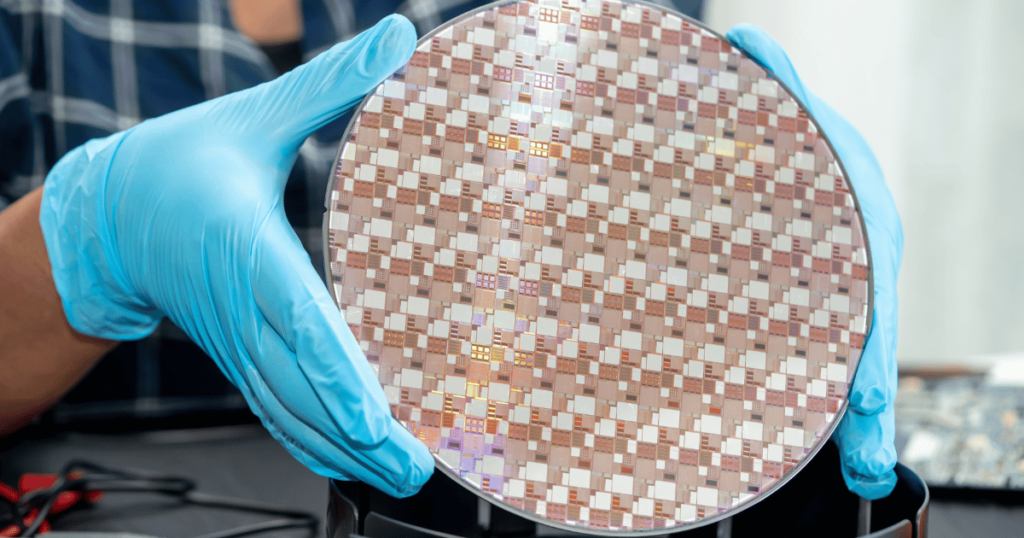Getting a brilliant product idea to market is about creating something that can actually be made efficiently, cost-effectively, and at scale. That’s where design for manufacturing (DFM) becomes your secret weapon, transforming promising concepts into production-ready winners. Smart companies know that the most innovative design means nothing if it can’t be manufactured profitably. DFM bridges this critical gap by weaving manufacturing realities into every design decision from day one, preventing costly surprises and delays that derail product launches.
Ready to bring your product ideas to life with effective design for manufacturing? Partner with Gembah to streamline your journey from concept to market. Visit our website to learn more about how we can help you succeed!
TL;DR
Design for Manufacturing (DFM) bridges the gap between great product ideas and efficient mass production. By integrating manufacturing considerations early—such as simplified designs, standardized components, and sustainable materials—companies reduce costs, speed up time-to-market, and improve product quality. With digital tools, AI, and sustainability top of mind, DFM has become essential for competitive product development. Gembah helps companies apply these principles from concept to launch, ensuring products are not only innovative, but also manufacturable and profitable.
Key Takeaways
- Design for Manufacturing (DFM) ensures that product designs are aligned with production capabilities from the start—reducing costs, errors, and delays.
- Core DFM principles include simplification, standardization, smart material selection, assembly optimization, and tolerance planning.
- Integrating DFM early and fostering cross-functional collaboration leads to faster development cycles and improved product quality.
- Emerging trends like AI-driven design, sustainability, and circular economy strategies are reshaping modern DFM practices.
- Gembah applies DFM throughout the product development journey, helping businesses scale efficiently while improving manufacturability and market success.
Also Read:

Understanding Design for Manufacturing (DFM)
Definition and Importance of DFM
When we ask “what is DFM,” the answer reveals a methodology that fundamentally changes how products come to life. Design for manufacturing represents a strategic approach where manufacturing considerations become integral to product design from the earliest conceptual stages. Rather than treating production as an afterthought, DFM ensures that every design choice supports efficient, cost-effective manufacturing.
The design for manufacture definition goes beyond simple cost-cutting. It creates a foundation where products naturally align with manufacturing capabilities, reducing the friction between brilliant ideas and market reality. This approach prevents the all-too-common scenario where designers create something beautiful but impossible to produce economically.
What makes DFM particularly powerful is its preventive nature. By anticipating production challenges during design, teams avoid expensive redesigns and manufacturing delays that can sink promising products. The methodology requires close collaboration between designers, engineers, manufacturers, and quality teams, ensuring that practical manufacturing needs inform every creative decision. As manufacturing professionals emphasize, collaboration between design teams and manufacturing engineers remains essential and is considered “the cornerstone of a successful DFM implementation”.
Key Objectives of DFM
The core DFM principles focus on creating products that manufacturing teams can produce consistently and profitably. Streamlining product designs stands as the primary objective, simplifying complex assemblies into manageable components that workers can handle reliably. This simplification directly translates to reduced manufacturing costs without sacrificing the functionality that customers expect.
Recent industry data reveals the substantial impact of effective DFM implementation. Companies typically achieve cost reductions of 10% to 20% in production costs through advanced manufacturing strategies that include DFM principles. Meanwhile, manufacturers implementing comprehensive DFM approaches report ROI improvements of 15% to 25% within 12 to 24 months of implementation.
Quality enhancement represents another crucial objective of effective DFM implementation. By designing with manufacturing constraints in mind, products naturally become more robust and consistent. Fewer assembly steps mean fewer opportunities for errors, while standardized components ensure predictable performance across production runs.
Speed to market becomes achievable when designs align with manufacturing realities from the start. Products move faster through development cycles because teams spend less time resolving manufacturability issues and more time refining features that matter to customers. Industry analysis shows that DFM and digital design strategies can reduce development cycles by 20% to 30%, translating to faster revenue generation.
The Evolving Role of DFM in Modern Manufacturing
Today’s manufacturing landscape demands DFM approaches that embrace digital transformation and emerging technologies. The integration of generative AI into DFM practices is rapidly growing, with projections indicating that 33% of new product and asset designs will use AI-driven simulations or optimizations by 2027, compared to less than 5% in 2023. This technological evolution enables design teams to explore manufacturing possibilities that were previously impossible to evaluate quickly.
Modern DFM technology incorporates machine learning algorithms that can predict manufacturing challenges and suggest design optimizations automatically. These tools analyze vast databases of manufacturing data to identify patterns and recommend improvements that human designers might miss. The result is more informed decision-making that balances creativity with practical manufacturing constraints.
As of 2024, manufacturing professionals are implementing process-specific design rules alongside Geometric Dimensioning and Tolerancing (GD&T) and assembly optimization techniques that have been demonstrated to effectively reduce manufacturing costs and improve production efficiency.
Sustainability has also become central to contemporary DFM practices. Designers now consider environmental impact alongside traditional manufacturing metrics, selecting materials and processes that minimize waste while maintaining product performance. This shift reflects growing consumer demand for responsible manufacturing and regulatory pressure for sustainable business practices.

Core Principles of Design for Manufacturing
1. Simplification: Reducing Complexity in Design
The most impactful design for manufacturing principles start with ruthless simplification. Every additional component, feature, or assembly step creates opportunities for errors, increases costs, and complicates production logistics. Smart designers ask themselves whether each element truly adds value or simply adds complexity.
Real-world results demonstrate the power of this approach. A high-volume plastic seat manufacturer used digital manufacturing cost models to optimize their design by reducing thickness from 0.18″ to 0.15″ in key regions, achieving a nearly 20% cost reduction per part while maintaining product integrity and user comfort. The reduced thickness also led to faster cooling times, delivering additional cycle time and cost savings.
Gembah highlights simplification as the primary DFM principle—reducing part count and assembly steps to lower costs, improve efficiency, and decrease the chance of manufacturing errors. This approach doesn’t mean creating boring products; it means achieving desired functionality through elegant solutions that manufacturing teams can execute consistently.
Successful simplification often involves combining multiple functions into single components or eliminating features that don’t directly serve customer needs. When designers resist the temptation to add “nice-to-have” elements, they create products that are inherently more manufacturable and reliable.
2. Standardization: Utilizing Uniform Components
Standardization transforms chaotic supply chains into streamlined operations that support consistent quality and predictable costs. When products use standard fasteners, connectors, and materials, manufacturers benefit from established supply relationships, bulk pricing, and proven quality processes. This approach reduces the risk of component shortages and simplifies inventory management across product lines.
The power of standardization extends beyond individual products to entire product families. Companies that design platforms using common components can achieve economies of scale while offering customers variety through different configurations. This strategy allows manufacturers to optimize tooling investments and worker training while maintaining flexibility in market positioning.
Modular design represents the pinnacle of effective standardization, enabling manufacturers to create product variations through different combinations of standard modules. This flexibility supports mass customization without the complexity typically associated with bespoke manufacturing, delivering both efficiency and market responsiveness.
3. Efficient Material Selection and Usage
Material choices ripple through every aspect of manufacturing, from processing requirements to final product performance. Effective design for manufacture examples demonstrate how smart material selection can dramatically improve both manufacturability and product quality. Materials that are readily available, cost-effective, and compatible with chosen manufacturing processes create the foundation for successful production.
The best material decisions consider the entire manufacturing ecosystem, including supplier relationships, processing equipment capabilities, and quality control requirements. Materials that seem attractive on paper might prove problematic in practice if they require specialized handling or create inconsistent results during processing.
Manufacturing professionals consistently emphasize pursuing design simplicity and optimizing material usage as cornerstones of effective DFM. This approach includes minimizing assembly steps to reduce production complexity and costs while maintaining desired functionality.
4. Assembly Optimization and Error Minimization
Assembly represents the critical moment where individual components become finished products, making assembly optimization essential for manufacturing success. Products designed for straightforward assembly reduce labor costs, minimize errors, and support consistent quality across production runs. Smart design choices can eliminate the need for specialized tools or highly skilled workers, making production more accessible and reliable.
Cross-industry data reveals that DFM consistently delivers measurable improvements in assembly efficiency. Manufacturing initiatives that properly implement DFM principles typically achieve assembly time reductions of up to 40% across various sectors.
Error-proofing, or “poka-yoke,” represents a crucial aspect of assembly optimization. Design features that prevent incorrect assembly save time, reduce waste, and improve product reliability. Simple solutions like asymmetrical connectors or color-coded components can eliminate common assembly mistakes that otherwise require costly rework.
The geometry of parts and their interfaces plays a critical role in assembly efficiency. Components that naturally guide workers through correct assembly sequences, with clear alignment cues and intuitive connections, create smoother production flows and reduce training requirements for manufacturing teams.
5. Incorporating Tolerance and Compliance from the Start
Tolerance decisions made during design profoundly impact manufacturing costs and product quality. Unnecessarily tight tolerances can multiply production costs without providing meaningful benefits to customers, while overly loose tolerances might compromise product performance or reliability. The key lies in understanding which dimensions truly matter for product function and focusing precision where it provides the greatest value.
Industry analysis shows that manufacturers utilizing DFM as part of broader digital investments realize asset efficiency gains and reduced warranty and scrap costs, often cutting quality-related losses by 15% or more through effective tolerance management and quality control integration.
Compliance requirements must be woven into design decisions from the earliest stages rather than addressed as afterthoughts. Products designed with regulatory requirements in mind avoid costly redesigns and delays that can derail product launches. This proactive approach ensures that testing and certification processes proceed smoothly, supporting faster time to market.
Quality control considerations should influence design choices to enable effective inspection and testing throughout manufacturing. Products designed with accessible test points and clear quality indicators make it easier for manufacturing teams to identify and address issues before they reach customers.

Steps to Implement Effective DFM
1. Integrating DFM Early in Product Development
The most successful DFM implementations begin before the first sketch is complete. Gembah stresses the importance of integrating manufacturing constraints and requirements during the design phase, not after. This early integration prevents the expensive surprises that occur when beautiful designs meet manufacturing reality for the first time.
Early DFM integration requires a fundamental shift in how development teams approach new products. Instead of designing in isolation and hoping for manufacturing compatibility, successful teams involve manufacturing expertise from the conceptual stage. This collaboration ensures that creative vision aligns with production capabilities, creating designs that are both innovative and manufacturable.
Digital manufacturing and DFM enable earlier and more frequent design validation using simulation and digital twins. This “fail fast” approach allows teams to identify and resolve manufacturability issues early, significantly reducing development iterations and accelerating time to market. These digital tools allow teams to explore manufacturing scenarios without the time and expense of physical prototypes, supporting more thorough evaluation of design alternatives.
2. Cross-Functional Collaboration for Holistic Design
Effective DFM demands breaking down traditional silos between design, engineering, manufacturing, and quality teams. When these groups work in isolation, critical manufacturing considerations often surface too late in the development process, leading to expensive redesigns and delays. Cross-functional collaboration ensures that all perspectives inform design decisions from the beginning.
The Autodesk and Xometry partnership provides a compelling example of successful cross-functional collaboration. Their macro keypad redesign project focused on improving fitment and tolerance stack management, simplifying assembly processes, and reducing part complexity. The collaboration resulted in enhanced ease of assembly, significantly reduced manual labor requirements, improved part quality and consistency, and lower environmental impact through material and process optimization.
Regular design reviews involving manufacturing experts help identify potential issues while solutions remain relatively simple and inexpensive. These collaborative sessions often reveal opportunities for improvement that individual team members might miss, leading to better products and more efficient manufacturing processes.
The most successful cross-functional teams establish shared goals and metrics that align everyone around manufacturability objectives. When design teams understand manufacturing constraints and manufacturing teams appreciate design intent, natural collaboration emerges that benefits the entire product development process.
3. DFM Analysis Techniques and Tools
Modern DFM analysis software enables design teams to evaluate manufacturability with unprecedented accuracy and speed. These tools simulate manufacturing processes, identify potential issues, and suggest improvements before physical prototypes are created. The result is more informed design decisions that balance creativity with manufacturing realities.
The integration of digital tools in manufacturing processes has become increasingly important. Manufacturing professionals are leveraging analysis tools to optimize design and reduce costs, helping to bridge “the gap between design and manufacturing”.
Failure Mode and Effects Analysis (FMEA) represents a systematic approach to identifying potential manufacturing problems and their impacts. By evaluating what could go wrong during production and assessing the severity of potential issues, teams can prioritize design improvements that provide the greatest risk reduction.
Cost modeling tools help designers understand the financial impact of their choices, enabling trade-offs between features, materials, and manufacturing processes. When designers can see how their decisions affect production costs, they naturally gravitate toward solutions that provide the best value for customers while remaining profitable for manufacturers.
4. Prototyping, Testing, and Iteration for Success
Physical prototypes remain essential for validating design assumptions and testing manufacturability, even in an era of sophisticated simulation tools. Prototypes reveal subtle issues that digital analysis might miss, particularly in areas like assembly ergonomics, material behavior, and quality control processes.
The iterative nature of effective prototyping allows teams to refine designs based on real-world feedback from manufacturing trials. Each prototype generation should address specific questions about manufacturability, moving systematically toward a design that balances all requirements effectively.
Testing extends beyond basic functionality to include manufacturing process validation. Understanding how products behave during actual production processes helps identify opportunities for improvement that might not be apparent from design reviews alone.
5. Validation: Ensuring Design Meets Manufacturing and Market Needs
Final validation confirms that designs are ready for full-scale production by demonstrating consistency, quality, and manufacturability under realistic conditions. Pilot runs provide valuable data about production rates, quality levels, and potential issues that might emerge during scaling.
A compelling validation success story comes from logistics operations, where a warehouse process redesign using DFMA tools increased daily picking capacity dramatically from 1,694 SKUs to 8,470 SKUs—about a 5-fold productivity improvement. The redesigned workflow met daily demand more consistently, reinforcing customer satisfaction and overall production capacity.
Market validation ensures that manufacturing-optimized designs still deliver the customer value that justifies the development investment. The most manufacturable product means nothing if customers don’t want to buy it, making market testing an essential component of comprehensive validation.
Data-driven validation provides objective evidence that designs meet all requirements while identifying areas for continuous improvement. This systematic approach supports confident scaling decisions and provides a foundation for ongoing optimization as production volumes increase.

Sustainability and Future-Proofing with DFM
Designing for a Circular Economy
The circular economy fundamentally changes how designers approach product development, emphasizing durability, repairability, and material recovery over traditional linear consumption models. Products designed for circular economy principles create value throughout extended lifecycles while reducing environmental impact and resource consumption.
Modular architectures support circular economy objectives by enabling component replacement, upgrades, and reconfiguration rather than complete product disposal. When products can be easily disassembled and components reused or recycled, they contribute to sustainable material flows that reduce waste and resource demand.
Over 95% of manufacturers report having a formal or informal sustainability and/or ESG policy in place, signaling near-universal prioritization of sustainability in manufacturing operations. This widespread commitment creates market pressure for designs that support sustainable manufacturing and lifecycle management.
Selecting Eco-Friendly Materials
Material choices profoundly impact both manufacturability and environmental sustainability, making eco-friendly material selection a critical design consideration. Renewable, recycled, and biodegradable materials can reduce environmental footprint while meeting performance requirements, though they often require different processing approaches than traditional materials.
The sustainable manufacturing market was valued at $199.66 billion in 2023 and is projected to reach $523.67 billion by 2032, with an 11.31% compound annual growth rate. This rapid growth reflects increasing demand for sustainable manufacturing solutions that balance environmental responsibility with business objectives.
Lifecycle assessment helps designers understand the full environmental impact of material choices, from extraction through disposal. Materials that seem environmentally friendly at first glance might have hidden impacts in processing or transportation that affect their overall sustainability profile.
Designing for Disassembly and Recycling
Products designed for easy disassembly enable material recovery and recycling at end-of-life, supporting circular economy objectives while potentially creating new revenue streams from recovered materials. Design choices like reversible fasteners, clearly marked materials, and separation-friendly joining methods facilitate effective disassembly.
Material compatibility plays a crucial role in recycling effectiveness, with mixed materials often creating challenges for recovery processes. Designs that minimize material mixing or enable easy separation support more effective recycling and material recovery.
Clear labeling and documentation help ensure that products are properly processed at end-of-life, maximizing material recovery and minimizing environmental impact. This information becomes particularly important as recycling processes become more sophisticated and automated.
Measuring DFM Success: Metrics and Impact on Sustainability
Effective measurement systems track both traditional manufacturing metrics and sustainability indicators, providing comprehensive insight into DFM effectiveness. Cost savings, quality improvements, and time-to-market acceleration remain important, but they must be balanced against environmental impact and resource efficiency metrics.
Implementation of smart factory technologies (such as big data analytics) in manufacturing can deliver a 15–20% increase in return on investment (ROI), largely attributed to improved resource efficiency and reduced waste generation. These technologies enable more precise measurement and optimization of both manufacturing performance and environmental impact.
Lifecycle analysis provides comprehensive measurement of DFM success by evaluating products from material extraction through end-of-life management. This holistic view helps identify improvement opportunities that might not be apparent from manufacturing-focused metrics alone.

Learn:
How to Manufacture a Product and Sell It
5 Easy to Follow Steps for First Time Creators.
Gembah: Your Partner in Design for Manufacturing
Correctly leveraging DFM in new product development requires expertise across industries and supply chains. Gembah offers end-to-end product development services, supporting businesses and entrepreneurs from concept to manufacturing to turn ideas into market-ready products.
With a network of skilled designers and factories, Gembah accelerates the design development process towards mass production. Their approach integrates manufacturing considerations early, simplifying designs and standardizing parts to minimize costs and reduce waste, thereby preventing costly redesigns.
Optimized designs enhance robustness, leading to fewer defects and greater reliability. Gembah’s application of design for manufacturing (DFM) principles ensures that products are both efficient to produce and reliable in the market.
For companies looking to optimize production and launch innovative products, Gembah provides comprehensive guidance that embeds DFM principles throughout the process. This creates a predictable journey from concept to manufacturing. The future favors those who can balance innovation with manufacturability, and Gembah equips businesses with the expertise to thrive.



